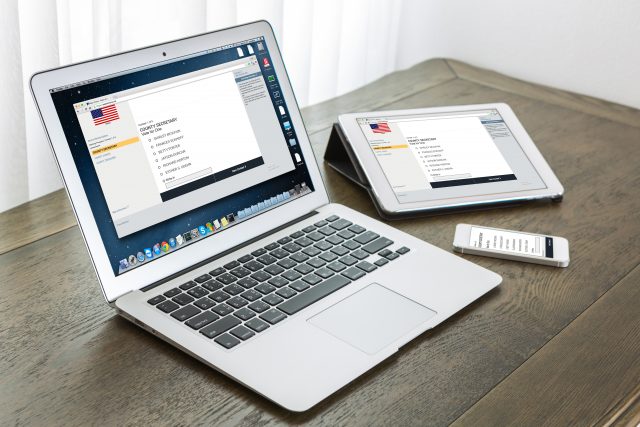OMAHA, Neb. — A voter can review and digitally mark a ballot on a computer, tablet or smartphone and then cast the ballot at a polling place thanks to a new product from Election Systems & Software.
The ExpressPass™ system from ES&S represents the company’s latest innovation to give voters more convenience and flexibility when exercising their democratic right to vote, said Tom Burt, ES&S president and chief operating officer.
“ES&S continually develops reliable and secure ways to give voters more ballot-casting options,” Burt said. “ExpressPass accomplishes this with a system that gives voters time to research candidates and then mark their ballots from the comfort of their homes. This saves them time at the polls.”
The ExpressPass system can be used to offer sample ballots. These counties offered ExpressPass sample ballots to voters in their 2014 General Elections: Potter, Robertson, Ellis and Smith counties in Texas, Hancock County in Indiana and the Danville Election Commission in Illinois.
With the ExpressPass system, an election jurisdiction provides its voters with a secure web page where a voter can use a computer, tablet or smartphone to anonymously look up his or her address. The voter is then given access to an on-screen ballot that’s identical to the ballot in the polling place. The voter can easily navigate and mark the ballot, taking time to research ballot options if needed. The voter’s choices are marked but not recorded, protecting anonymity and privacy.
 ExpressPass can be used with ExpressVote®, ES&S’ federally approved voting device, to allow voters to print sample ballots they can fill out either on Election Day or during an early-voting period. The printout includes directions to early voting locations or a voter’s Election Day polling location. Also, smartphone users can scan the quick response (QR) code on the digital ballot at their polling places to easily and quickly cast ballots. Voters always have the option to change selections before casting their ballots.
ExpressPass can be used with ExpressVote®, ES&S’ federally approved voting device, to allow voters to print sample ballots they can fill out either on Election Day or during an early-voting period. The printout includes directions to early voting locations or a voter’s Election Day polling location. Also, smartphone users can scan the quick response (QR) code on the digital ballot at their polling places to easily and quickly cast ballots. Voters always have the option to change selections before casting their ballots.
ExpressPass has an accessible format for voters with disabilities who use assistive technologies, such as screen readers and navigational software. The system meets requirements of the U.S. Americans with Disabilities Act.
“We look forward to helping election jurisdictions implement this innovation that gives voters more choices while saving their taxpayers money,” Burt said.
